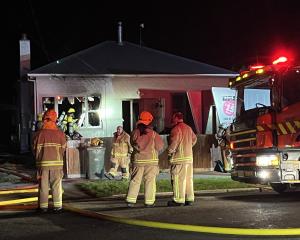The GNS Science Consultancy 2013 tsunami hazard update has found the probability of a tsunami has not changed but the maximum possible size of a tsunami in some areas has increased.
While North and East Otago has not been identified as being in danger of increased tsunami heights, Waitaki Civil Defence has a working party looking at local tsunami risks, warning systems and evacuation route planning for its coastal communities, emergency manager Chris Raine said yesterday.
Some communities, like Oamaru, have much of their infrastructure and business district near sea level along the coastline.
The latest report reinforced the need for the public to understand and be prepared to respond to the threat of a tsunami.
''The probability of a tsunami has not changed but the maximum possible size of a tsunami in some areas has increased,'' he said.
A large tsunami generated very close to New Zealand could arrive before an official warning was issued or sirens activated.
''People must know that if they are at the coast and feel a strong earthquake [it is hard to stand up] or a weak earthquake that lasts for a minute or more, then get to high ground or go inland. Do not wait for an official warning,'' he said.
The review shows the maximum possible size of some local and regional tsunami was bigger than previously understood, though the probability of tsunami has not increased.
A tsunami from a local earthquake would arrive in less than one hour, and one from a regional earthquake would arrive in one to three hours.
Since New Zealand's entire coast was at risk of tsunami, Waitaki residents needed to know how to reach the nearest safe ground in the event of an earthquake.













